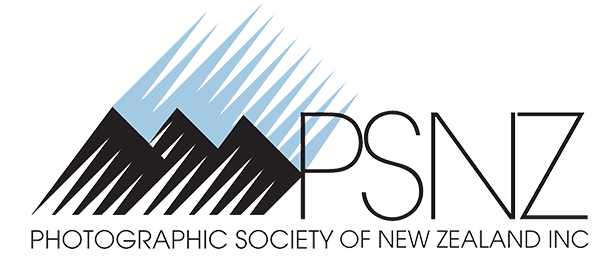A reminder that the deadlines for submissions for PSNZ Honours are fast approaching. Audiovisual portfolios are due by 14 February, and print and projected image portfolios by 28 February.
Lots of information is available here on the PSNZ website, including examples of successful Honours sets. The downloadable Guideline documents include application forms. Application forms can also be obtained from the Honours Board Secretary, Heather Harley – email heather.harley@xtra.co.nz – (updated as of January 2014).
Why should you go for Honours? Read the following, which was prepared by Newell Grenfell Hon PSNZ FPSNZ FNPSNZ:
Why Go For PSNZ Letters?

A camera club friend said to me, “Going for letters is just an ego trip, isn’t it?” I had to agree that successful applicants take pride in their achievement, but going for PSNZ letters is not just an ego trip.
I asked the member why he first joined a camera club. “To learn to make better photographs,” he replied. “So are you succeeding?” I asked. One reason to go for letters is to get an objective measure of where you stand as a photographer. When you have letters after your name, you are no longer just a keen photographer; you have a recognised qualification. In some careers (NZ Police, for example) it’s a qualification that can be taken into account in your professional grading.
Going for letters gives you a goal. It’s something concrete to achieve with your photography. We all need encouragement and, at times, motivation to keep shooting. Once you have an ‘L’ you can set yourself the goal of going for ‘A’, and so on. (It’s not essential to start at ‘L’. If your work is of a sufficient standard, you can go for an ‘A’ first up. But if you’re uncertain, it’s best to try and get some runs on the board with an ‘L’. You don’t have to be a PSNZ member to go for an ‘L’; and images used in going for an ‘L’ are allowed to be re-used in a later ‘A’ submission.)
A further reason to go for letters is to learn new skills. Most of what we learn in camera clubs relates to individual images. What you must produce for letters is a portfolio. It’s not just a matter of digging out your best shots. There’s an art to putting a portfolio together, and it’s an art worth learning. Portfolio arrangement skills can be used to arrange photographs in an album, put a book together, make AVs, and so on. A good portfolio is better than the sum of the individual parts.
The Guidelines for Honours on the PSNZ website stress the importance of the way the portfolio is arranged. The collective eye of the Honours Board needs to flow comfortably from one image to the next. (There is no substitute for a careful reading of the Guidelines.) It is highly recommended that you seek advice from someone who has been through the process. Honours Board Chairman, Graham Dainty FPSNZ observed, “We all tend to be subjective about our own work. The advice of a senior club member can be invaluable – particularly when it comes to arranging the sequence of your images.”
Those seeking letters with print or projected image portfolios must submit them by February 28. The deadline for audio-visuals is two weeks earlier, February 14. Board membership for 2013 assessments is the same as last year (in alphabetical order): Bruce Burgess FPSNZ, Brian Cudby FPSNZ, AFIAP, ESFIAP, Graham Dainty FPSNZ (Chair), Sally Mason FPSNZ, Bruce Shanks FPSNZ, ANZIPP and Gary Speer FPSNZ, MFIAP. John Boyd Hon FPSNZ, Hon PSNZ, APSNZ will again attend as non-voting Co-ordinator to help the Board maintain consistency and try to ensure that all reports to unsuccessful applicants are as constructive and helpful as possible.
Applicants are not allowed to show their portfolios to current Board members before assessment. However, if a submission is not successful, it can be discussed with one of the members afterwards for general comments and future guidance.
